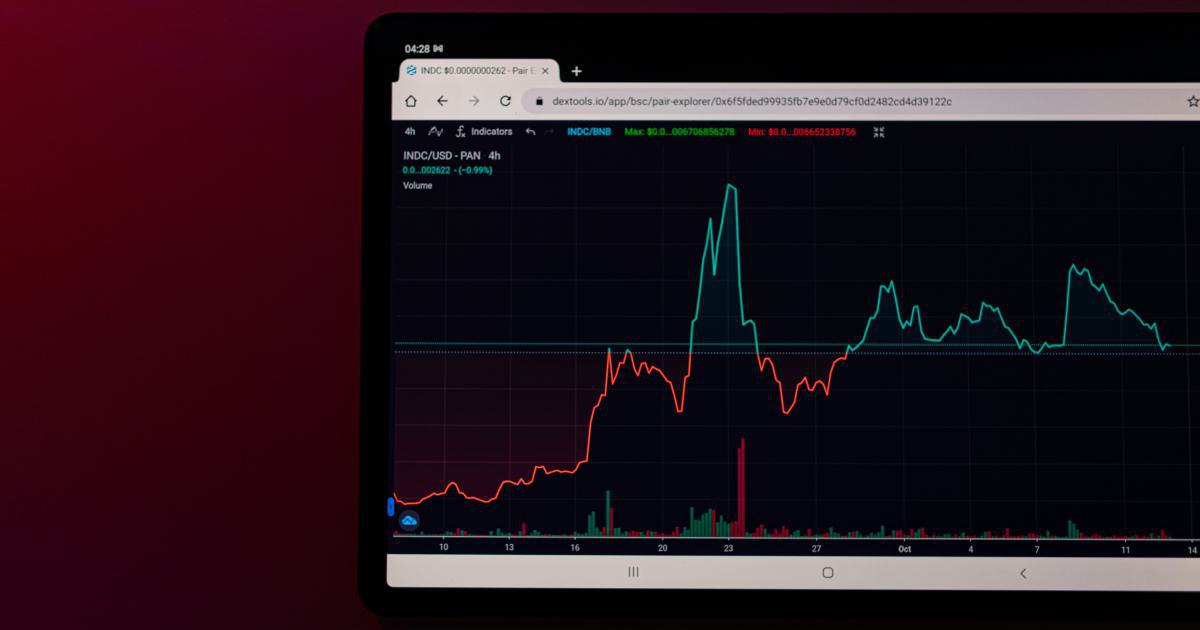Master Trend Following with Trailing Stop Losses

Trend following is a time-tested approach for capitalizing on market momentum, and when paired with trailing stop losses, it can transform a robust strategy into a disciplined, risk-managed trading system. In this comprehensive guide, we will explore the intricacies of trend following combined with trailing stop losses, discussing fundamental concepts, strategies, actionable insights, and real-world examples. By integrating the robust methodology of trend-tracking with the smart risk handling of trailing stop losses, traders can improve profitability and safeguard gains in volatile markets.
Understanding Trend Following
Trend following is one of the most straightforward yet effective trading strategies. At its core, it hinges on the idea that assets moving in one direction are likely to continue on that trajectory for a certain period. Trend followers identify these trends and use various technical indicators, such as moving averages, momentum oscillators, and patterns, to pinpoint entry and exit points. The strategy is based on the belief that market movements tend to follow trends—whether temporary or long lasting—and that capturing these directional movements can be highly profitable.
Historically, trend following emerged as a popular method among institutional investors and hedge funds. Wealthy market participants like the famed Turtle Traders and other trend-following systems from the 1970s to the present have demonstrated significant successes with this approach. The beauty of trend following lies in its ability to work across asset classes including equities, forex, commodities, and even cryptocurrencies.
One significant advantage for trend followers is the reduction of decision stress: once a trend is identified, the strategy is built on exiting only when evidence suggests the trend is reversing. No micro-management of every small fluctuation is necessary. Instead, the focus is on capturing the breadth of market movement.
With carefully timed entries and exits, traders who adhere to a disciplined trend following approach often emphasize the importance of risk management. This is where trailing stop losses play a crucial role, helping traders lock in profits as a trend unfolds while ensuring that sudden market reversals don’t erode substantial gains.

The Psychology Behind Trend Following
At the heart of trend following is a psychological component that is as critical as technical analysis. Traders have to overcome the temptation to second-guess market directions and must remain committed to a strategy even through interim price swings. This unwavering commitment could be challenging, especially considering market noise and the volatility inherent to financial instruments. By automating certain aspects of the strategy (for example, through predetermined trailing stop losses), traders can take much of the emotional pressure out of decision-making. A clear trading plan, which includes a well-defined exit strategy using trailing stop losses, prevents the trader from holding on to positions for too long once the market shows signs of reversal.
Real-World Examples of Trend Following Success
To further appreciate the power of trend following, consider the classic example of the 2008 financial crisis. Many investors who were short-term and reactive to market conditions saw their losses pile up, whereas disciplined trend followers that stuck to systematic rules could capture long-term moves as markets began to recover. For instance, commodity futures traders used trend following systems to exploit the prolonged trends within oil and gold markets, managing their risk by using predetermined trailing stop losses. This approach allowed them to preserve gains during periods of sudden volatility, transforming market downturns into opportunities.
Moreover, success isn’t limited to large funds or institutional players. Many individual traders, equipped with modern trading platforms and mobile applications, now utilize trend following techniques to manage diversified portfolios. As technology has advanced, so have the tools necessary for technical analysis, making it more accessible to the everyday trader.
The Role of Trailing Stop Losses in Trend Following
Trailing stop losses are not merely risk management tools—they are vital components that can make or break a trend following strategy. A trailing stop loss adjusts itself as the price of an asset moves in a favorable direction, securing profits and offering protection when market reversals occur. The power of trailing stop losses is embedded in their automated nature; using them, traders don’t have to constantly monitor every minute movement in the markets. This allows them to focus on the bigger picture while ensuring that gains are not lost due to sudden market reversals.
What Are Trailing Stop Losses?
A trailing stop loss is a dynamic exit order that moves in tandem with the asset’s price. Unlike static stop losses, which are set at fixed price levels, trailing stop losses are often defined by a percentage or specific dollar amount. As the asset’s price increases, the trailing stop adjusts upward (in long positions) or downward (in short positions) accordingly. If the price then moves against the favorable trend by more than the preset amount or percentage, the trade will be automatically exited at the current market price.
For example, suppose a trader enters a long position at $100 with a 10% trailing stop loss. As the asset’s price rises to $120, the trailing stop adjusts to $108. Should the market then reverse, and the price drop to $108, the stop-loss would trigger, locking in a significant portion of the profit.
The success of using trailing stop losses in trend following is underscored by the fact that they embody a form of ‘cutting losses and letting profits run’—a mantra cherished by many successful traders.
Benefits and Mechanism of Trailing Stop Losses
The primary benefits of trailing stop losses include:
- Automatic Profit Protection: Firmly secures gained profits as the price moves favorably.
- Enhanced Discipline: Removes the trader’s emotional bias from deciding when to exit a trade.
- Risk Mitigation: Limits potential losses by automatically closing positions when the trend reverses by a specified margin.
- Flexibility: Can be set based on either a fixed amount or a percentage of the asset’s price.
Integrating trailing stop losses into a trend following strategy brings together the best of both worlds—capturing the maximum potential profit from a winning trend while preserving gains once the trend begins to weaken.
Case Study: A Trailing Stop Loss in Action
Consider a scenario with a trending technology stock. A trend follower enters a long position at $150 when the stock begins to break out on increased volume and upward momentum. The trader applies a trailing stop loss of 8%, meaning that as the price rises, the stop price moves upward. Over a period of weeks, the stock reaches $200. With the trailing stop loss now sitting at $184, the stock takes a sharp downturn. Without the trailing mechanism, a trader might have held on for too long or exited too early. However, because the trailing stop was in place, the trade was automatically exited at $184, ensuring that a substantial profit was secured despite the sudden reversal.
This case study exemplifies why trailing stop losses are invaluable for trend following strategies—they embody a calculated exit system that minimizes emotional bias while maximizing returns.

Key Strategies for Mastering Trend Following with Trailing Stop Losses
To effectively master trend following with trailing stop losses, traders should consider incorporating the following step-by-step strategies and best practices. This section provides actionable insights, expert tips, and a dissection of different scenarios where these strategies have yielded positive results.
1. Define Clear Entry and Exit Criteria
A trend follower must have clearly defined entry and exit points. Start by establishing signals from technical indicators such as moving averages, Relative Strength Index (RSI), or MACD crossovers. When the market meets these criteria, it signals a potential entry point. Upon a successful entry, immediately set a trailing stop loss based on historical volatility and your risk tolerance.
Here are some tips for setting these parameters:
- Determine the “distance” for your trailing stop by analyzing historical price swings.
- Consider both fixed values and percentage-based stops. A percentage-based approach may cater better to the inherent volatility of a particular asset.
- Use backtesting to assess and fine-tune the distance that the stop should trail the price. Historical performance helps optimize parameters to suit the specific asset behavior.
2. Use Multiple Time Frames
It is often beneficial to analyze trends over multiple time frames. For instance, a trader might use daily charts for the overall trend direction, but then zoom into hourly charts for optimized entry and exit points. This multi-timeframe approach helps confirm the trend’s strength and provides additional layers of insight. By overlaying trailing stop losses on your multi-timeframe analysis, you ensure that your risk management is comprehensive and adaptable to both long-term trends and short-term volatility.
3. Diversify Your Trading Instruments
While trend following with trailing stop losses is effective across different asset classes, diversification is key to risk management. Spread your trading capital across varying asset classes such as equities, commodities, forex, and even emerging markets like cryptocurrencies. Diversification helps reduce risk in case one market deviates from its expected trend. Moreover, trailing stop losses can be tailored for each asset’s volatility. For highly volatile securities, employing a wider trailing distance might be appropriate, while for more stable assets, a tighter stop loss can secure gains more quickly.
4. Regularly Reassess Your Strategy
Even a well-established trend following strategy must be periodically revisited and adjusted. Market dynamics can shift over time, particularly with changing economic landscapes or regulatory changes. Regular reassessment involves:
- Reviewing historical trades: Analyze both winning and losing trades to understand whether your trailing stop losses are set too tight or too loose.
- Adapting to new market conditions: Economic crises, geopolitical events, and technological innovations can all affect market trends.
- Incorporating feedback: Use data analytics and feedback from automated trading systems to update your strategy as necessary.
Implementing Automation in Trading Strategies
With the advent of algorithmic trading, many traders now rely on automated systems to execute trend following strategies with trailing stop losses. Such systems help in reducing the errors inherent in manual trading, particularly during rapidly changing market conditions. By programming your trading platform to automatically adjust trailing stops, you can maintain maximum discipline and remove the impact of emotions such as fear or greed during volatile moments.
Real-World Strategy Implementation
Imagine a scenario where a trader uses an algorithm that continuously monitors a basket of stocks known for high liquidity and volatility. Upon detecting a consistent upward trend confirmed by increased trading volume, the algorithm initiates a buy order and sets a trailing stop loss at 7% below the current price. As the stocks rise, the trailing stop is automatically updated. When the trend presents signs of reversal—as flagged by another technical indicator such as a moving average crossover—the algorithm executes a sell order, efficiently locking in profits before the decline deepens.
This systematic approach not only enforces discipline but also capitalizes on consistent, repeatable actions—a key requirement for long-term success in trend following.

Tools and Platforms for Implementing Trailing Stop Losses
Modern technology offers a wealth of tools designed to streamline trend following strategies. From advanced trading platforms to specialized software, traders have a variety of options to assist in setting and maintaining effective trailing stop losses.
Essential Trading Software
Many popular trading platforms come equipped with built-in support for trailing stop orders. Platforms like MetaTrader, NinjaTrader, and TradeStation offer customizable settings that allow traders to automate trailing stops. Additionally, some platforms offer simulation or backtesting capabilities, which are invaluable for optimizing your parameters before risking real capital.
Features to look for in trading software include:
- User-friendly interfaces that allow for rapid adjustments of stop loss parameters.
- Integration with multiple technical indicators that help confirm trends.
- Backtesting modules that let you simulate past market conditions to refine your trailing stop strategy.
- Alerts and notifications that keep you informed about the status of open trades.
API Integration and Custom Algorithms
For traders with programming acumen, API integrations allow you to build custom algorithms tailored to your specific strategy. By integrating real-time data feeds with your trading algorithm, you can dynamically adjust trailing stops in response to sudden market changes. This level of customization gives you a competitive edge and enables the development of proprietary trading models that can be tested against historical market data using machine learning techniques.
Mobile Apps for On-the-Go Trading
In today’s fast-paced environment, having the ability to manage trades outside of the home or office is crucial. Many trading platforms now offer robust mobile applications that support trailing stop orders. This means that even when away from a computer, traders can monitor their trends, adjust stop losses, and respond quickly to market movements. Leveraging mobile technology helps ensure that your trading strategy remains agile and adaptive to shifting market dynamics.
How to Choose the Right Platform
When selecting a platform, consider the following:
- Does the platform support the asset classes you intend to trade?
- Is the interface user-friendly for both beginners and experienced traders?
- What is the track record of stability and reliability, especially during high market volatility?
- How robust is the customer support in case you encounter issues with executing or maintaining trailing stop orders?
Regardless of the platform chosen, the goal remains to create a seamless, automated process that integrates your trend following signals with pre-set trailing stop losses for optimal risk management and profit protection.
Best Practices and Common Pitfalls
While the strategic advantages of using trailing stop losses in trend following are significant, certain pitfalls can diminish their effectiveness if not handled properly. Here, we outline the best practices for integrating these tools, as well as the common mistakes to avoid.
Best Practices for Effective Trading
Maintain a disciplined mindset and adhere strictly to established trading plans.
Continuously monitor and assess the performance of your trailing stop loss parameters. The market evolves, and so should your strategy.
Backtest your strategy on historical data before applying it in live markets.
Consider diversification across different asset classes to spread risk.
Understand your risk tolerance limits and adjust trailing stop loss percentages accordingly.
Common Pitfalls to Avoid
Setting trailing stop losses too tight can result in premature exits from potentially profitable trades, while too loose a setting can expose you to significant reversals.
Over-optimization of stop parameters based on historical data may not necessarily translate to future success—market conditions are dynamic.
Ignoring broader market signals and relying solely on automated systems without periodic human oversight can lead to missed opportunities or delayed reactions during critical moments.
Failing to update the trailing stop loss parameters in response to changing market volatility may reduce their effectiveness.
By employing a balanced approach, combining diligent trend analysis with well-managed trailing stop losses, traders can develop a robust framework capable of weathering market shifts and preserving gains over time.
Future Trends and Advancements in Trend Following
As markets evolve, so do the strategies and tools employed by traders. The future of trend following with trailing stop losses is poised to benefit from rapid technological advancements such as artificial intelligence and machine learning. These innovations can help in predictive modeling, risk assessment, and even automate the adjustment of trailing stop parameters in real time.
Emerging Technologies in Trading
Recently, advancements in algorithmic trading have allowed for the integration of social sentiment analysis and alternative data sources. For instance, AI-driven algorithms are now capable of processing vast amounts of market data (including news articles, social media sentiment, and global economic indicators) to refine trend predictions. This can lead to more adaptive stop loss strategies that adjust dynamically with market sentiment.
Moreover, the implementation of blockchain technology in trading systems could enhance transparency and efficiency. Smart contracts combined with automated stop loss orders can facilitate seamless, trustless trade executions, thereby reducing the time lag often associated with manual interventions.
The Impact of Regulatory Changes
Regulatory environments continue to influence how traders manage risks, including the implementation of stop loss orders. As transparency and accountability in trading increase due to tighter regulations, the reliance on mechanical trading systems such as those utilizing trailing stop losses is likely to gain traction among retail and institutional investors alike.
Integration of Data Science
Data science and real-time analytics are transforming trend following strategies. By employing big data solutions and advanced statistical models, traders can uncover subtle market trends that were previously difficult to detect. The ability to process and react to large datasets in real-time enables traders to fine-tune their trailing stop loss parameters more frequently and respond swiftly to potential market reversals.
Future-Proofing Your Strategy
To stay ahead in the constantly evolving financial markets, consider the following tips:
- Invest in continuous education and stay updated on new trading technologies and market research.
- Regularly revisit your trading strategy to incorporate new insights and technological advancements.
- Experiment with simulated environments (paper trading) to test out emerging methods of integrating trailing stop losses with trend following.
- Collaborate with other traders and participate in online trading forums to exchange innovative ideas and receive constructive feedback.
Conclusion
Mastering trend following with trailing stop losses involves more than just following market trends—it requires a disciplined, risk-managed approach that embraces both technical analysis and dynamic exit strategies. By understanding the fundamentals of trend following, applying carefully calibrated trailing stop losses, and keeping a vigilant eye on market dynamics, traders can effectively protect profits while capturing long-term momentum.
In this article, we explored the core principles behind trend following, delved into the mechanics and benefits of trailing stop losses, and examined the practical strategies and tools that empower traders to integrate these elements seamlessly. From defining clear entry and exit criteria to leveraging automation and emerging technologies, every aspect of this strategic approach has been discussed in detail.
The fusion of trend following with trailing stop losses offers a robust framework that both novice and experienced traders can adopt. It is a blend of art and science—grounded in data yet flexible enough to adapt to ever-changing market conditions. Whether you are a retail trader seeking to minimize emotional trading impulses or an institutional investor looking to protect substantial capital, the disciplined application of these strategies may lead to greater success and higher confidence in your trading endeavors.
As the future of trading continues to evolve with technological progress and deeper market insights, mastering these techniques will be essential. Keep refining your strategies, stay informed of global market trends, and always be prepared to adjust your trailing stop loss parameters in response to new data. With persistence, a rigorous trading plan, and the right blend of analysis and technology, you are well on your way to mastering trend following with trailing stop losses.
Remember, successful trading is not solely determined by your ability to jump on a trend—it’s largely about managing risk and protecting capital during uncertain times. Embrace the robust discipline of trailing stop losses, and let them be the safety net that anchors your trend following strategy. By combining technical know-how, advanced automation, and diligent risk management, traders can confidently navigate volatile markets while holding on to valuable profits.
Armed with the insights and tools provided in this guide, you are now equipped to take your trend following strategy to the next level. Whether you are exploring new asset classes or refining your existing methods, the smart integration of trailing stop losses serves as an enduring principle of successful, sustainable trading.
In summary, mastering this approach requires continuous learning, careful monitoring, and a steadfast commitment to risk management. With every well-executed trade, your experience grows, and so does your ability to adapt to the dynamic world of market trends. Stand firm in your strategy, remain vigilant, and let the power of automation and intelligent risk controls pave your way to trading success.
Unmatched Trading Power with Binance
Are you ready to take your trading game to new heights? Binance offers a cutting-edge platform for seamless cryptocurrency transactions.
With lightning-fast execution, top-tier security, and a vast selection of coins, you'll have all the tools you need to maximize your profits. Join now and experience the future of trading.
Keval Desai
61 posts written





